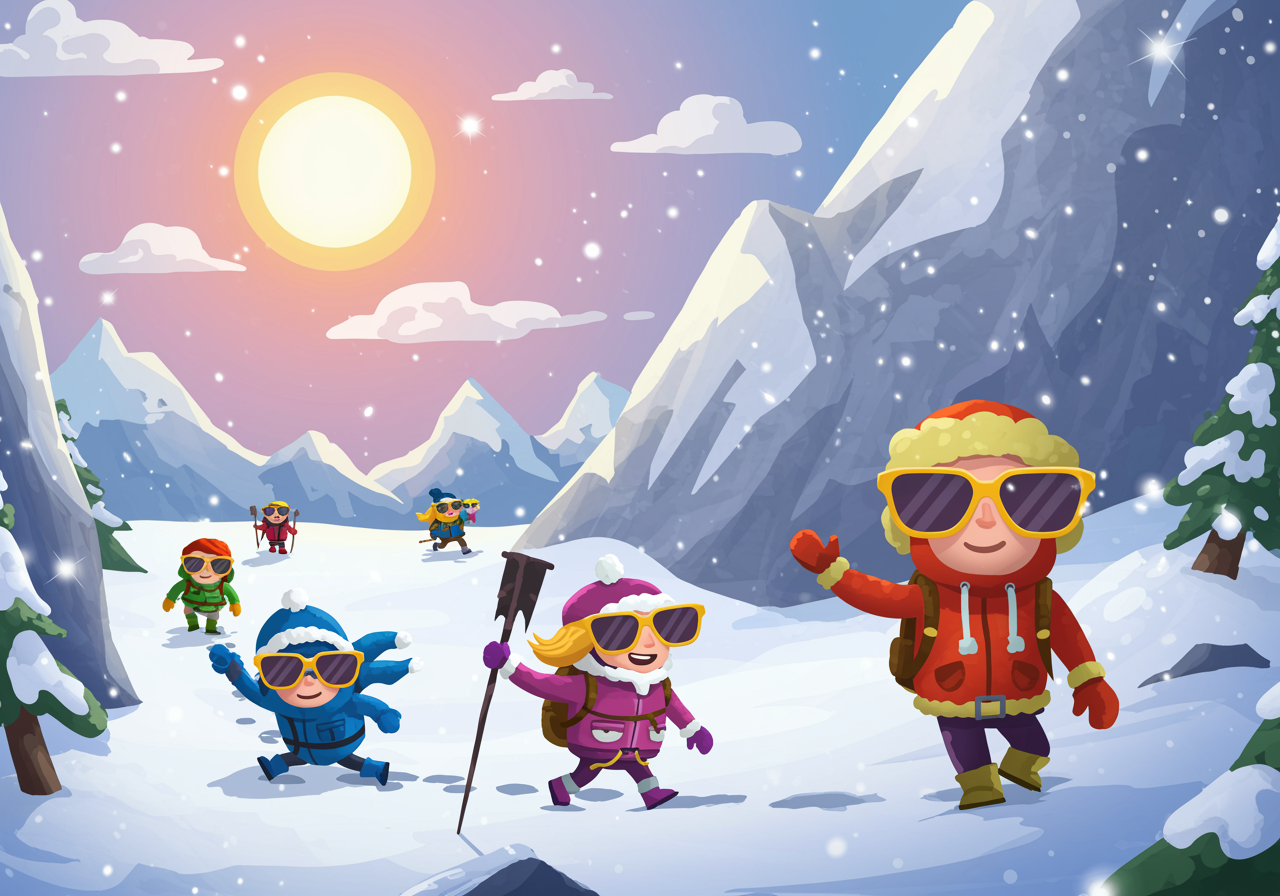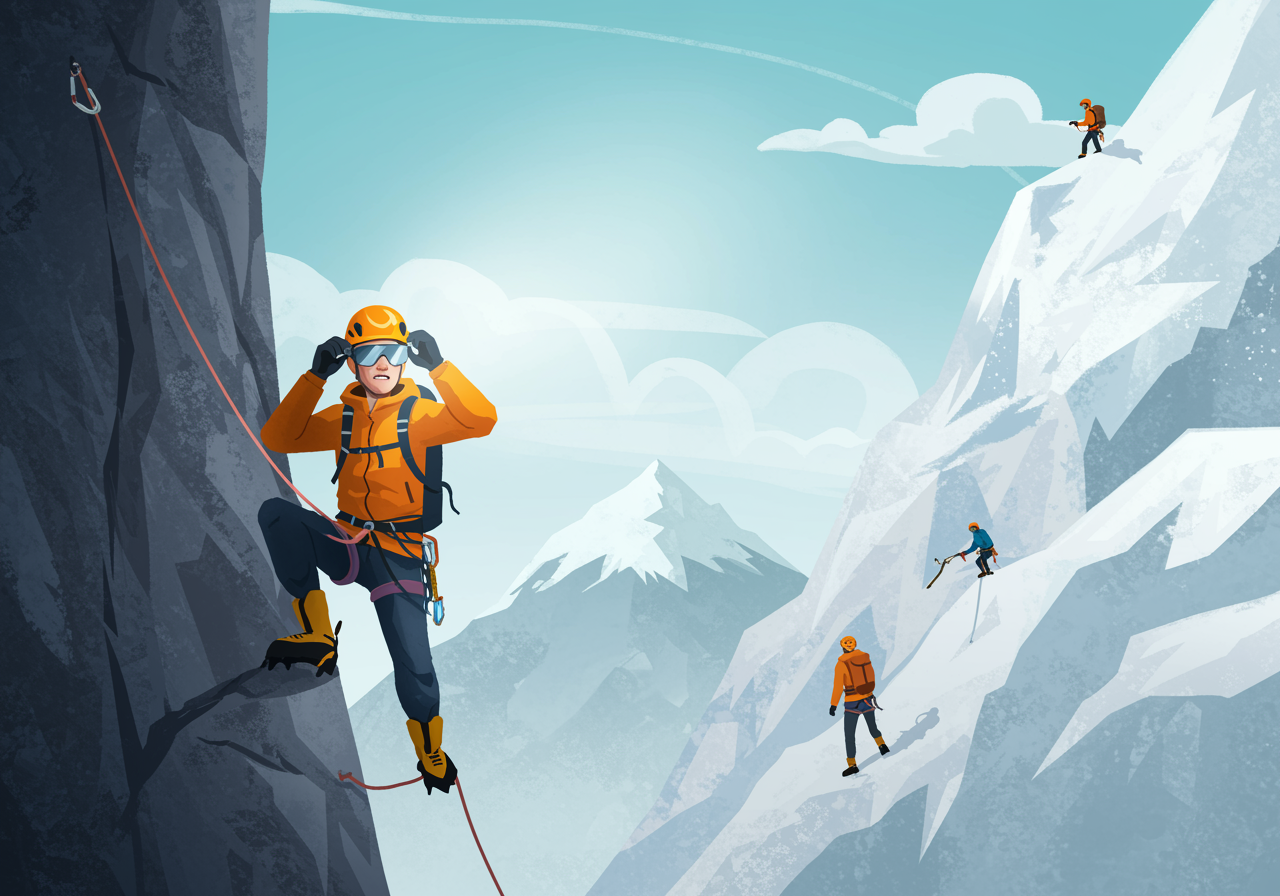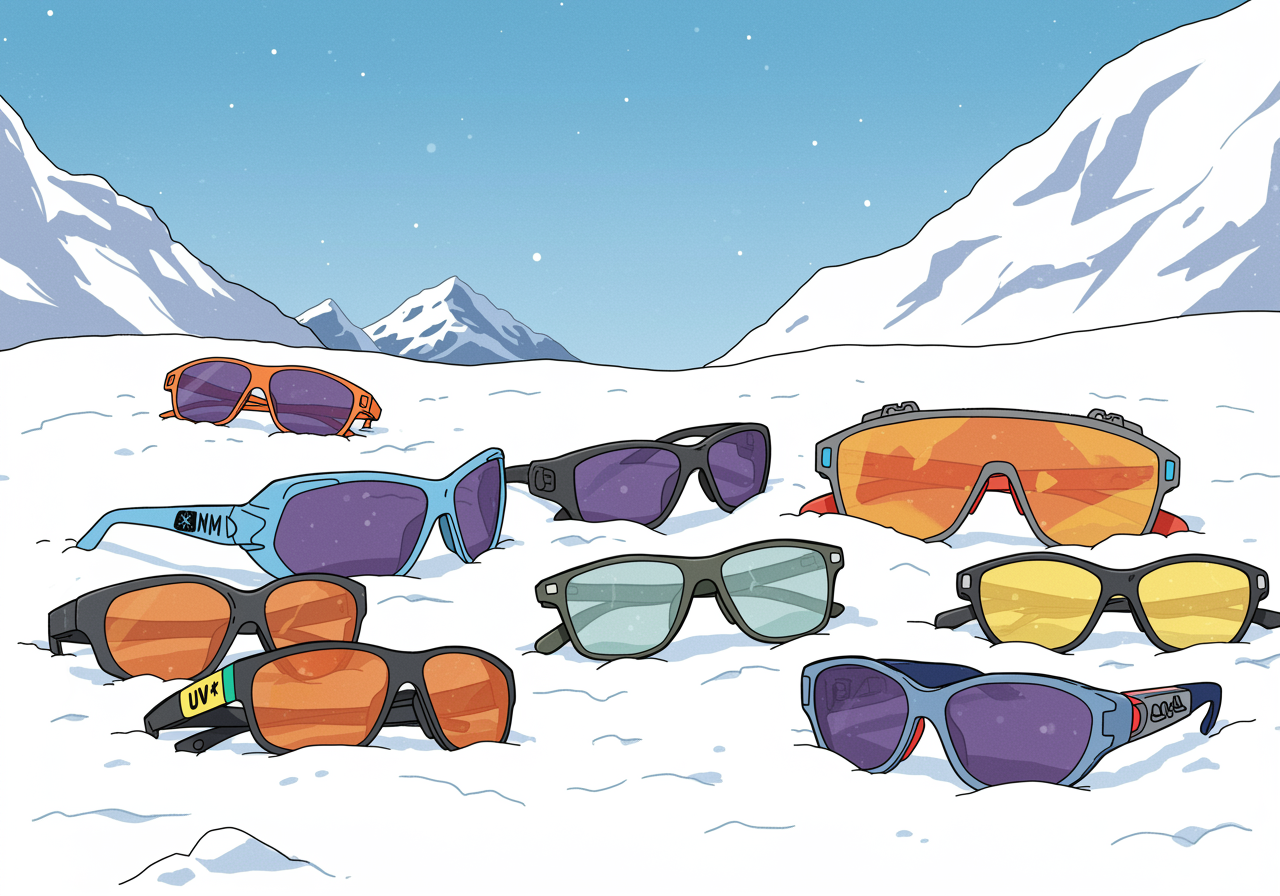Mountain Eyes: Why Climbers Wear Super Cool Sunglasses Way Up High
Discover why your eyes need armor when conquering peaks!
Ever wonder why mountain climbers look like they’re wearing space goggles? Let’s explore the amazing science behind protecting your peepers at high altitudes!
Overview
When you see mountain climbers in photos, they're almost always wearing serious-looking sunglasses or goggles. It's not just for style – their eyes are facing some serious challenges up there! Mountains are like nature's giant mirrors, bouncing intense sunlight right into climbers' faces. Plus, the higher you go, the thinner the air gets, which means less protection from the sun's powerful rays. Understanding why eye protection matters helps kids appreciate both the science of our atmosphere and the importance of safety in extreme environments.

Understand in 30 Seconds
Get up to speed quickly
- Higher = More UV Rays: For every 1,000 feet you climb, UV radiation increases by about 10-12%. It's like turning up the sun's intensity dial!
- Mountains Are Giant Mirrors: Snow, ice, and even light-colored rocks reflect up to 80% of sunlight back at climbers, creating a double dose of brightness.
- Snow Blindness Is Real: Without protection, climbers can get 'sunburned eyes' – a painful condition that feels like sand in your eyes and can cause temporary blindness.
- Glare = Danger: Too much glare makes it hard to see where you're stepping, turning every climb into a risky guessing game.
Real Life Scenario
Situations you can relate to
Imagine you're at the beach on a super bright day, and the sun is reflecting off the water right into your eyes. Now multiply that by ten and add the fact that you're trying to navigate dangerous cliff edges! That's what climbers face on mountains. Think about how squinty you get just walking from a dark movie theater into bright sunlight – now imagine that feeling lasting for hours while you need perfect vision to stay safe. Have you ever noticed how much brighter snow looks on a sunny winter day compared to grass? That's because snow reflects almost all the light that hits it, while grass absorbs most of it. On a mountain, climbers are surrounded by this natural spotlight from every direction!

Role Play
Spark a conversation with “what if” scenarios
What if you had to navigate your house while someone shined a flashlight directly in your eyes?
- Role play: Try walking through a familiar room while your parent gently shines a phone's flashlight near (not at) your face to simulate glare, then discuss how this would feel on a mountain ledge.
What if your eyes could get sunburned just like your skin?
- Role play: Compare how your skin feels after too much sun to how climbers describe snow blindness – burning, stinging, and the feeling of sand in your eyes.
What if you were climbing and suddenly couldn't see clearly due to glare?
- Role play: Practice describing surroundings to each other while one person closes their eyes, showing how communication becomes crucial when vision is compromised.
FAQs
Frequently asked questions people want to know
Why can't climbers just squint to protect their eyes?
Squinting only blocks a tiny bit of light and causes eye strain. Plus, you need clear vision to spot handholds and avoid dangerous spots on the mountain.
Do regular sunglasses work for mountain climbing?
Not usually! Mountain sunglasses need to block more UV light (99-100%) and often have side shields to block reflected light from all angles.
Can you really go blind from not wearing eye protection while climbing?
Yes, but it's usually temporary. Snow blindness can last 24-48 hours and is extremely painful, but permanent damage is rare if treated properly.
Examples in the Wild
See how this works day to day
- In 2023, several climbers on Mount Everest experienced snow blindness when their goggles fogged up and they removed them temporarily during the climb. (Outside Magazine)
- Antarctic researchers wear special sunglasses rated for extreme conditions because the continent reflects up to 90% of sunlight, creating one of the brightest environments on Earth. (National Science Foundation)
- Professional mountaineer Ed Viesturs always carries backup eye protection because he once had to descend a mountain nearly blind after his sunglasses broke. (Climbing Magazine)
- The Inuit people traditionally used snow goggles made from bone or wood with narrow slits to prevent snow blindness while hunting. (Smithsonian National Museum of Natural History)
In Summary
What you should know before you start
- Mountains amplify UV radiation because there's less atmosphere to filter the sun's rays as you climb higher
- Snow, ice, and light rocks act like giant mirrors, reflecting intense light from multiple directions
- Without proper eye protection, climbers risk snow blindness – essentially a sunburn on their eyeballs
- Special mountain sunglasses block 99-100% of UV rays and often include side protection to block reflected glare
Pro-tip for Parents
You got this!
If your child seems skeptical about the 'sunburned eyes' concept, try this: explain that our eyes have the same sensitive skin (called the cornea) that can get damaged by UV light, just like the skin on their shoulders after a day at the beach without sunscreen. You can also point out how they naturally squint and look away when walking from shade into bright sunlight – that's their body trying to protect their eyes from damage!

Keep an Eye Out For
Find these examples in everyday life
- Winter sports events where athletes wear specialized goggles – great opportunities to discuss eye protection in snowy, bright conditions
- News stories about mountain rescues or climbing expeditions, which often mention the challenges of extreme weather and bright conditions
- Solar eclipse events, which always include warnings about eye protection and provide perfect examples of how powerful sunlight can damage unprotected eyes
Explore Beyond
Look up these related research topics
- How do astronauts protect their eyes in space where there's no atmosphere to filter radiation?
- Why do different animals have different eye adaptations for bright environments?
- How do pilots and high-altitude workers protect their vision in extreme conditions?